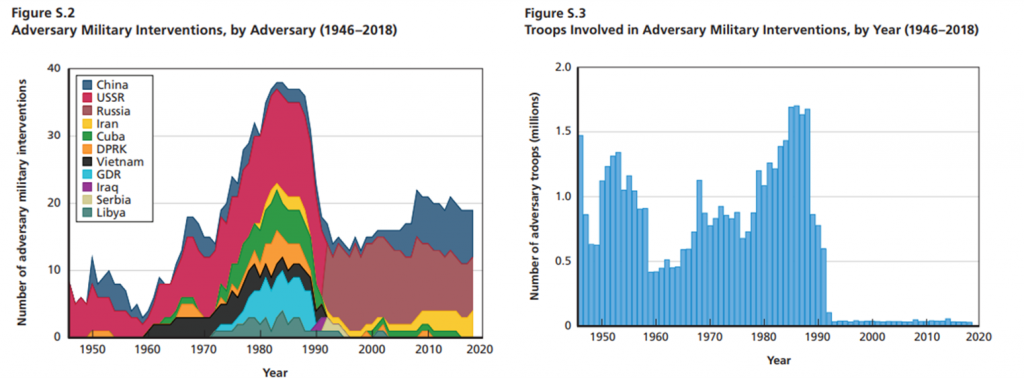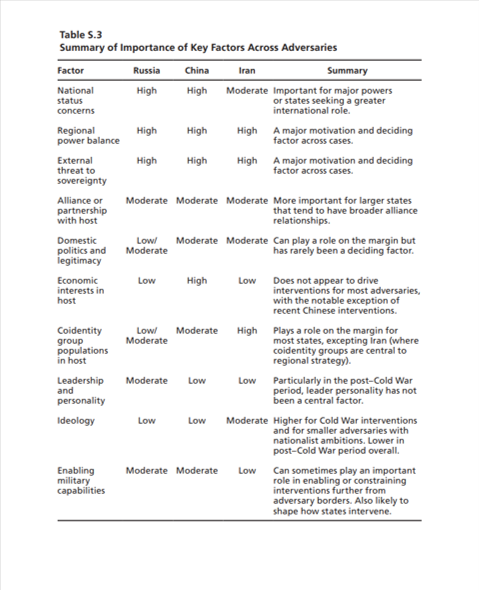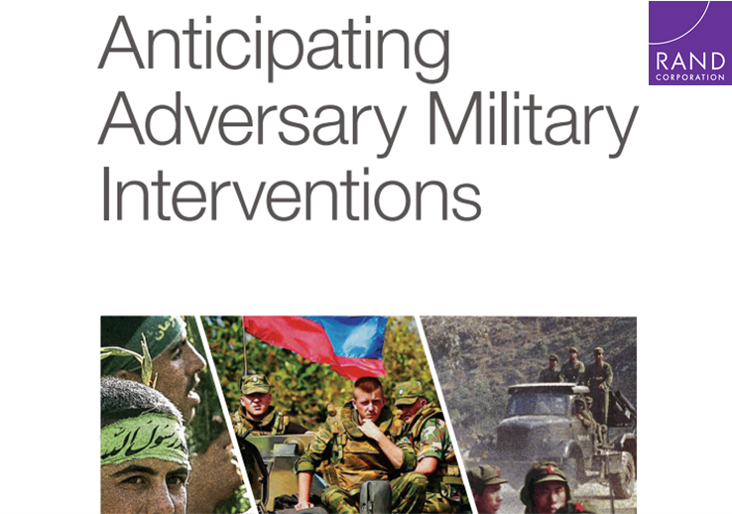RAND Report Asks What Pushes America’s Competitors to Send Military Abroad
In a recent publication titled “Anticipating Adversary Military Interventions”, RAND attempted to discover “what drives US adversaries to use military forces abroad”. In order to find an answer, researchers focused on two research questions:
- “Where, how, and how often have US adversaries intervened militarily since 1946?”
- “What factors drive US adversaries to use military forces abroad?”

The height of adversary military deployments came at the climax of the Cold War in the 1980s after mostly steady growth for most of the postwar years. With the collapse of the USSR, this saw a steep decline but began to rebound somewhat in the 2000s. Nevertheless, despite highly publicized and discussed interventions as in the case of the Russian hybrid war against Ukraine, today’s numbers are far lower than those at the peak of the Cold war. The most recent spike in numbers can be primarily attributed to China’s growing military reach. However, it is important to highlight that the number of interventions does not mean sizeable interventions. The 1980s saw millions of Soviet and other adversary troops abroad while today the total is but a five-digit number.
The report was primarily focused on three identified adversaries: China, Iran and Russia. While no factor guarantees interventions, some such as considerations of “regional power balance”, “ideology” or “economic interest” could have a noticeable effect.

Among these, it was found that China has the most potential for expanding its military interventions abroad. Out of all adversaries, it has the greatest resources and capabilities at its disposal and a growing list of interests and ambitions beyond its home region. It is easy to foresee how domestic developments or a significant deterioration in the Sino-American relationship could drive this further.
Overall, the report concluded that there is no need for excessive concern over adversary interventions as of right now while also identifying “intervention signposts” deserving particular attention from analysts. Its key findings included:
- “Overall, adversary military interventions, in number and in scale, remain far below the levels that the United States had to contend with during the Cold War.”
- “Several factors could contribute to a shift toward substantially more-aggressive and larger-scale interventions, including intensification of U.S. rivalries with key adversaries (e.g., Russia or China), adversary perceptions of the threats posed by U.S. actions, or dramatic domestic changes in China or Iran that alter how these adversaries think about and use their military forces.”
- “Adversaries are most likely to intervene in response to threats to interests in their home regions, including through military interventions involving combat.”
- “Analysts may benefit most from watching for evidence of a shift in the regional balance of power or change to the status quo that threatens the adversary’s influence or national status.”
The full report is available here.

